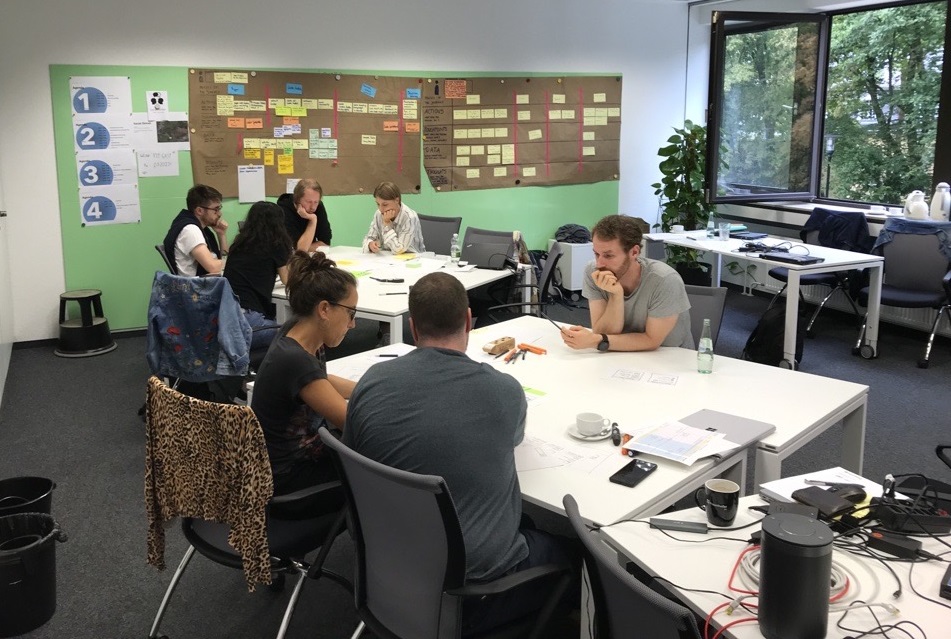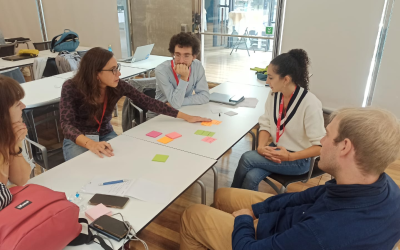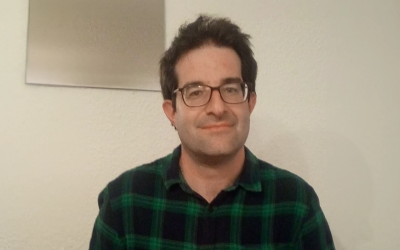
Paper prototyping session organized by Fraunhofer FIT in a workshop within the AD4GD project in Bonn. Photo: AD4GD
Fraunhofer FIT is leading the human-centered design approach throughout the project and defines the requirements, designs, and implements the user interface of the AD4GD platform based on a multi-actor approach.
With years of experience in human-centered engineering and design, Fraunhofer FIT wants to ensure an ideal user experience for all stakeholders and facilitate the cross-organizational data exchange. But what does the involved department Human Centered Engineering & Design (HCED) focus on? Here is a small introduction to some of their core strengths.
Managing Digitalization
The human-centered design of digitalization projects is one of the most relevant future technology skills. The negative economic impacts of solutions developed without considering human needs are evident across all industries and application fields.
HCED develops human-centered digitalization strategies for companies to convey a comprehensive understanding of digitalization trends, from business models to technology utilization. Our digitalization managers identify tailor-made technologies and ensure the acceptance of digitalization within the company. Therefore, HCED accompanies interested parties in developing a valid digitalization concept with appropriate technological solutions and in creating an implementation plan that is designed to be directly applicable in practice.
With our new training “Human-Centered Professional specialized in Digitalization Management” we offer an innovative education program, certified by the Fraunhofer Academy. Within one week, participants will gain expertise in digitalization management and are able to implement strategies in their businesses.
Design Thinking
Managing digitalization comes with challenges that require innovative problem solving. To tackle this, HCED works with Design Thinking methods – an iterative process that teams use to understand users, challenge assumptions, redefine problems and create fitting solutions to prototype and test. The Design Thinking process consists of five phases: empathize, define, ideate, prototype and test. Each step contributes to developing novel concepts, services, and products while continuously making ideas tangible and gathering feedback. These human-centered methods allow team members to deepen and expand their knowledge through shared exchanges as well as to identify and describe potential challenges in their own company. With structuring insights and the goals of their target audience in mind, they find potential solutions in communication with other participants.
We also share our comprehensive experiences in the conception and implementation of human-centered approaches from research projects, workshops, and collaborations with the business world. Thus, HCED offers an interactive online course to become a certified Human-Centered Professional specialized in Design Thinking.

Innovation Prototyping
While prototyping plays an important role in Design Thinking, it also stands out as a large part on its own. Good ideas should not gather dust in drawers but should be realized as tangible prototypes. A prototype allows you to present, test, and further develop your idea while minimizing costs and malproduction. It can be realized in variant forms, be it physically on paper or in the digital space as a 3D model.
To take on this approach, we use multiple methodologies such as the “Eco-Design Principles“ to create long-lasting outcomes. By using collaborative tools, best practices and challenges we find starting points for integrating prototyping methods and knowledge into partnering companies. Our experts iteratively involve relevant stakeholders, including respective user groups, in the prototyping process. At the same time, they place importance on the human-centeredness and significance of sustainability themes for prototyping.
When developing prototypes of service and business models, we utilize storyboards, user and customer journey maps, and Service Design Blueprints for developing a seamless service experience. The Value Proposition Canvas is further used for designing business models and desktop walkthroughs are used for testing a service and developing it further.
For the prototyping of digital products, we approach the rapid and visual development of prototypes with methods for the step-by-step improvement such as wireframes or page flow as a paper prototype. Methods like Wizard-of-Oz or thinking aloud are finally used for testing the prototypes.
With said background knowledge and proven methodological competence, HCED also passes their skills on to prospects in another certified training program for Human-Centered Professionals specialized in Innovation Prototyping.
Certificate Programs at Fraunhofer FIT
Finally, Fraunhofer wants to guarantee an effortless developing process for everyone and is offering help where needed. To bring innovation forward, HCED instructs and guides novices in the field of Digitalization Management, Design Thinking and Innovation Prototyping, no matter what age. With Fraunhofer Academy handing out digital and physical certificates to learners after passed training programs, no questions will be left open in terms of finding the right tools and methods for each individual project.
If you are interested in one of the trainings mentioned above, feel free to check out our website fit.fraunhofer.de/ux-trainings or contact our secretary Andrea Bernards by phone: +49 2241 14-3768 or e-mail at andrea.bernards@fit.fraunhofer.de.












